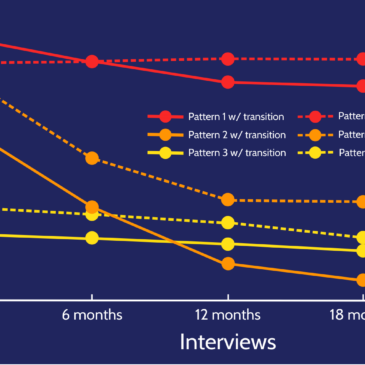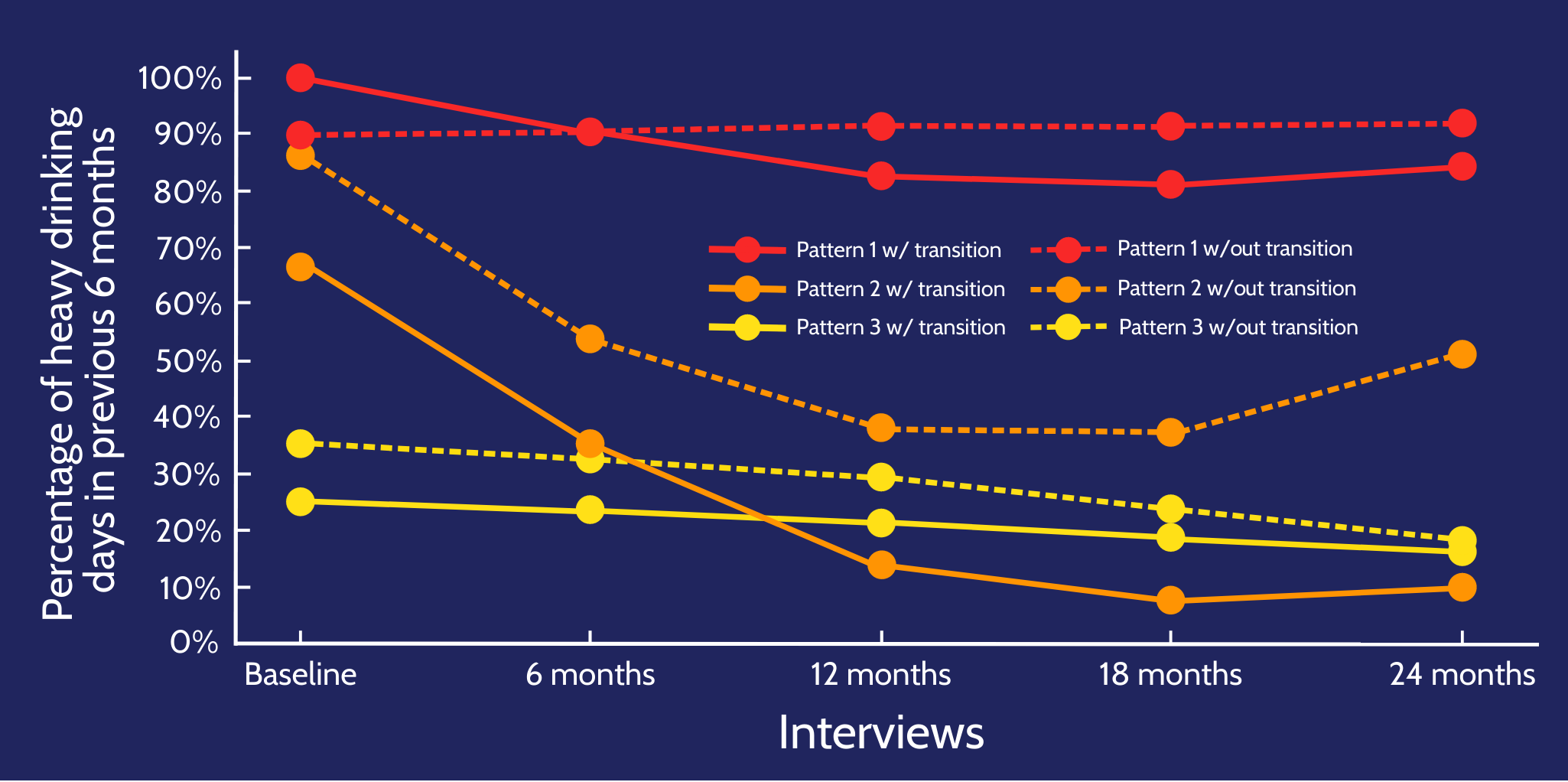Drinking identity, the extent to which someone views himself or herself as a drinker, might play an important role in recovery from drinking problems. Drinking identity is a strong predictor of hazardous alcohol use, and successful alcohol treatment is related to decreased identification with fellow drinkers. This week, as part of our Special Series on Self-Directed Recovery, The DRAM reviews a study by Kevin Montes and colleagues that examined the relationship between drinking identity and reduced heavy alcohol use among those in treatment-free alcohol recovery.
What was the research question?
Does change in drinking identity predict reduced problem alcohol use?
What did the researchers do?
The researchers used data from a 2013 study of self-directed alcohol recovery, in which American participants were interviewed about their daily drinking habits and drinking identities1 every six months for two years. Montes and colleagues limited their analysis to 149 participants who did not seek alcohol treatment either within the prior year or during the study period itself. They used growth mixture modeling to uncover latent drinking patterns among participants. Then, they compared the drinking patterns of those who transitioned from having an identity as a problem drinker to having an identity as a non-problem drinker in the first year to those who did not make this transition.
What did they find?
Montes and colleagues identified three latent drinking patterns:
- Pattern 1: frequent heavy drinking with a small decrease in heavy drinking frequency over time (10% of the sample)
- Pattern 2: large decrease over time from frequent heavy drinking to infrequent heavy drinking (13% of the sample)
- Pattern 3: infrequent heavy drinking with a small decrease in heavy drinking frequency over time (77% of the sample)
Across all 3 drinking patterns, participants who transitioned from a problem drinker identity to a non-problem drinker identity in Year 1 (10% of the sample) reported a greater decrease in heavy drinking than those who did not transition (see Figure). Additionally, those who transitioned from problem to non-problem drinking identity were 7 times more likely to follow Pattern 2 than Pattern 3.
Figure. Estimated drinking trajectories mapped over the course of 2 years. Colors represent latent drinking patterns, and solid lines denote those who transitioned drinking identity. Adapted from Montes et al., 2017. Click image to enlarge.
Why do these findings matter?
In self-directed alcohol recovery, changing one’s identity from problem to non-problem drinker may predict decreased drinking over time. This finding contradicts popular philosophies of alcohol recovery, most notably the “once an alcoholic, always an alcoholic” mantra used by Alcoholics Anonymous. Researchers need to learn more about why some people make this transition and not others, as this knowledge could be used to help people recover. For example, motivational interviewing can emphasize drinking identity and reveal the underlying reasons for behavioral change–maybe it can spark this transition.
Every study has limitations. What are the limitations in this study?
The assessment of drinking identity was a brief, one-question item, so participant responses might not reflect true drinking identities. Also, the vast majority of participants did not transition from problem to non-problem drinking identity. A larger sample of these transition-makers would provide stronger evidence for identity change as a predictor of reduced heavy drinking.
For more information:
Visit the National Institute on Alcohol Abuse and Alcoholism to learn more about the latest alcohol-related research. The BASIS addiction resources offers screening tools to help identify alcohol-related problems.
— Jamie Juviler
What do you think? Please use the comment link below to provide feedback on this article.
________________
1 To evaluate drinking identity, the researchers asked participants, “Do you currently think of yourself as a problem drinker?”





